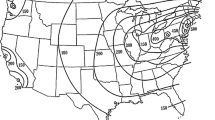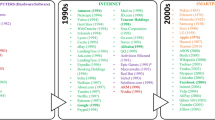Abstract
Considerable efforts have been made in recent years to produce detailed topologies of the Internet, but so far these data have been overlooked by economists. In this paper, we suggest that such information could be used to characterize both the size of the digital economy and outsourcing at country level. We analyse the topological structure of the network of trade in digital services (trade in bits) and compare it with the more traditional flow of manufactured goods across countries. To perform meaningful comparisons across networks with different characteristics, we define a stochastic benchmark for the number of connections among each country-pair, based on hypergeometric distribution. Original data are filtered so that we only focus on the strongest, i.e. statistically significant, links. We find that trade in bits displays a sparser and less hierarchical network structure, which is more similar to trade in high-skill manufactured goods than total trade. Moreover, distance plays a more prominent role in shaping the network of international trade in physical goods than trade in digital services.
Similar content being viewed by others
Rferences
Alba R (1973) A graph-theoretic definition of a sociometric clique. J Math Sociol 3(1): 113–126
Andes S, Castro D (2009) Driving a digital recovery: it investments in the g-20 stimulus plan, the Information Technology and Innovation Foundation, Washington DC
Berthelon M, Freund C (2008) On the conservation of distance in international trade. J Int Econ 75(2): 310–320
Bhagwati J, Panagariya A, Srinivasan TN (2004) The muddles over outsourcing. J Econ Perspect 18(4): 93–114
Bhattacharya K, Mukherjee G, Saramäki J, Kaski K, Manna S (2008) The international trade network: weighted network analysis and modelling. J Stat Mech Theo Exp 2:P02002
Blum BS, Goldfarb A (2006) Does the internet defy the law of gravity?. J Int Econ 70(2): 384–405
Brun J, Carrère C, Guillaumont P, De Melo J (2005) Has distance died? Evidence from a panel gravity model. World Bank Econ Rev 19(1): 99
Buldyrev S, Parshani R, Paul G, Stanley H, Havlin S (2010) Catastrophic cascade of failures in interdependent networks. Nature 464(7291): 1025–1028
Cairncross F (1997) The death of distance: how the communications revolution will change our lives. Harvard Business School Press, Cambridge, MA
Chinn MD, Fairlie RW (2007) The determinants of the global digital divide: a cross-country analysis of computer and internet penetration. Oxf Econ Pap 59(1): 16–44
Coe D (2002) The missing globalization puzzle. 2002–2171, International Monetary Fund
Colizza V, Flammini A, Serrano M, Vespignani A (2006) Detecting rich-club ordering in complex networks. Nat Phys 2: 110–115
Disdier A, Head K (2008) The puzzling persistence of the distance effect on bilateral trade. Rev Econ Stat 90(1): 37–48
Fagiolo G, Schiavo S, Reyes J (2008) On the topological properties of the world trade web: a weighted network analysis. Phys A Stat Mech Appl 387(15): 3868–3873
Fagiolo G, Reyes J, Schiavo S (2009) World-trade web: topological properties, dynamics, and evolution. Phys Rev E 79(3): 036115
Faloutsos M, Faloutsos P, Faloutsos C (1999) On power-law relationships of the internet topology. In: Proceedings of the conference on applications, technologies, architectures, and protocols for computer communication, ACM, pp 251–262
Feller W (1950) An introduction to probability theory and its applications. Wiley, New York
Freund C, Weinhold D (2002) The internet and international trade in services. Am Econ Rev 92(2): 236–240
Freund CL, Weinhold D (2004) The effect of the internet on international trade. J Int Econ 62(1): 171–189
Friedman T (2005) The world is flat: a brief history of the twenty-first century. Farrar, Straus & Giroux, New York
Garlaschelli D, Loffredo M (2004) Fitness-dependent topological properties of the world trade web. Phys Rev Lett 93(18): 188701
Garlaschelli D, Loffredo M (2005) Structure and evolution of the world trade network. Phys A Stat Mech Appl 355(1): 138–144
Gaulier G, Zignago S (2010) Baci: international trade database at the product-level. The 1994–2007 version. Working Papers 2010-23, CEPII research center
Hamilton D, Quinlan J (2007) Awakening the translatlantic services economy. Center for Translatlantic Relations, Washington, DC
Head K, Mayer T, Ries J (2009) How remote is the offshoring threat?. Eur Econ Rev 53(4): 429–444
Hortaçsu A, Martinez-Jerez A, Douglas J (2009) The geography trade on ebay and mercadolibre. Am Econ J Microecon 1(1): 53–74
Huberman B, Adamic A (1999) Growth dynamics of the world-wide web. Nature 401(6749): 131
Hubert L, Arabie P (1989) Combinatorial data analysis: confirmatory comparisons between sets of matrices. Appl Stoch Models Data Anal 5: 273–325
Krackhardt D (1987) QAP partialling as a test of spuriousness. Soc Netw 9: 171–186
Krempel L, Plumper T (2003) Exploring the dynamics of international trade by combining the comparative advantages of multivariate statistics and network visualizations. J Soc Struct 4(1): 1–22
Leamer E (2007) A flat world, a level playing field, a small world after all, or none of the above? A review of Thomas L. Friedman’s the World is flat. J Econ Lit 45(1): 83–126
Lennon C (2009) Trade in services and trade in goods: differences and complementarities. Working paper 53, Vienna Institute for International Economic Studies
Mahadevan P, Krioukov D, Fomenkov M, Dimitropoulos X, Claffy K, Vahdat A (2006) The internet as-level topology: three data sources and one definitive metric. SIGCOMM Comput Commun Rev 36:17–26. doi:10.1145/1111322.1111328
Maslov S, Sneppen K (2002) Specificity and stability in topology of protein networks. Science 296(5569): 910
Mehra B, Merkel C, Bishop A (2004) The internet for empowerment of minority and marginalized users. New Media Soc 6: 781–802
Micciche S, Tumminello M, Lillo F, Mantegna R (2011) Statistically validated networks in bipartite complex systems. PLoS ONE 6(3):e17994
Mok D, Wellman B et al (2007) Did distance matter before the internet? Interpersonal contact and support in the 1970s. Soc Netw 29(3): 430–461
Navaretti GB, Venables AJ (2004) Multinational firms in the world economy. Princeton University Press, Princeton, NJ
Newman M (2004) Analysis of weighted networks. Phys Rev E 70(5): 056131
Pastor-Satorras R, Vespignani A (2004) Evolution and structure of the internet: a statistical physics approach. Cambridge University Press, Cambridge
Peneder M (2007) A sectoral taxonomy of educational intensity. Empirica 34(3): 189–212
Pilat D, Lee F, van Ark B (2002) Production and use of ICT: a sectoral perspective on productivity growth in the oecd area. OECD Econ Stud 35(2): 47–78
Riccaboni M, Pammolli F (2002) On firm growth in networks. Res Policy 31(8-9): 1405–1416
Riccaboni M, Schiavo S (2010) Structure and growth of weighted networks. New J Phys 12: 023003
Serrano M, Boguná M (2003) Topology of the world trade web. Phys Rev E 68(1): 015101
Serrano M, Boguñá M, Vespignani A (2007) Patterns of dominant flows in the world trade web. J Econ Interact Coord 2(2): 111–124
Shavitt Y, Shir E (2005) DIMES—let the internet measure itself. ACM SIGCOMM Comput Commun Rev 35(5): 71–74
Tavazoie S, Hughes J, Campbell M, Cho R, Church G (1999) Systematic determination of genetic network architecture. Nat Genet 22: 281–285
van Ark B, O’Mahony M, Timmer M (2008) The productivity gap between Europe and the U.S.: trends and causes. J Econ Perspect 22(1): 25–44
Wilcoxon F (1945) Individual comparisons by ranking methods. Biometrics Bull 1(6): 80–83
WTO (1998) Eletronic commerce and the role of WTO. Special Studies 2, World Trade Organization
Wuchty S, Barabási A, Ferdig M (2006) Stable evolutionary signal in a yeast protein interaction network. BMC Evolut Biol 6(1): 8
Zhou S, Mondragon RJ (2004) The rich-club phenomenon in the internet topology. IEEE Commun Lett 8(3): 180–182
Author information
Authors and Affiliations
Corresponding author
Rights and permissions
About this article
Cite this article
Riccaboni, M., Rossi, A. & Schiavo, S. Global networks of trade and bits. J Econ Interact Coord 8, 33–56 (2013). https://doi.org/10.1007/s11403-012-0101-x
Received:
Accepted:
Published:
Issue Date:
DOI: https://doi.org/10.1007/s11403-012-0101-x




